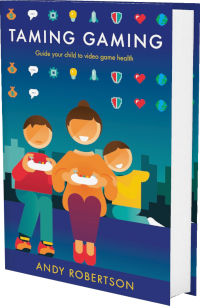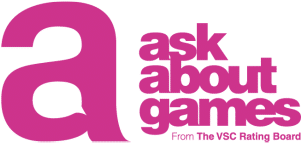 Android
Android iOS
iOS Mac
Mac Switch
Switch Wii
Wii Wii U
Wii U PC
PC PS4
PS4 PS5
PS5 Xbox One
Xbox One Xbox X|S
Xbox X|SWe've documented 20 accessibility features for The Legend of Zelda: Skyward Sword, including Large Subtitles, Motion Aiming, Play Without Hearing, Visual Cues and Colour Blind Friendly. Its accessibility is strongest in Getting Started and Reading but it also has features in Controls, Navigation, Visual and Audio to reduce unintended barriers.
This report is created with input from accessibility experts and the player community to help people find games that have the accessibility features they require. Once you have found potential games on the database, there are excellent specialist accessibility sites that offer in-depth reviews to guide your purchasing decisions.
Our accessibility examiner, Andy Robertson, first checked The Legend of Zelda: Skyward Sword accessibility 2 years ago. It was re-examined by Ben Kendall and updated 9 months ago.
 Accessibility Notes
Accessibility Notes
The Switch version of the game requires you to hold a button down to be able to control the camera. You also need to quickly execute Left-Right-Left to do a spin attack and click the stick down to use your shield. Also, the dialogue text is smaller on the higher-resolution Switch display. You can, however, fast-forward text on the Switch by pressing B. The Switch version now provides the name of the character who is speaking, which the Wii version didn't do. Also, the Switch version interrupts play with dialogue-less often and provides players with optional dialogue icons.
The Wii game required you to use motion controllers to trigger attacks and other actions in the game. You can view the bottom mappings on the screen while playing. The game map in Dungeons has to be collected before you can use it.
 Game Details
Game Details
Release Date: 23/11/2011, updated in 2021
Out Now: Switch, Wii and Wii U
Skill Rating: 9+ year-olds
Players: 1
Genres: Adventure (Action, Fighting, Narrative, Physically Active, Puzzle, Role-Play and Stealth)
Accessibility: 20 features
Components: 3D Third-Person, Day and Night and Open World
Developer: Nintendo (@Nintendo)
Costs: Purchase cost
 Controls
Controls
We've documented 3 accessibility features for Controls in The Legend of Zelda: Skyward Sword which deal with how you control the game, different options for alternative inputs and whether you can remap these settings to suit your needs.
Gamepad
Can play with the following:
Multiple Buttons & Two Sticks: Can play with multiple buttons and two sticks.
Motion
Games that can be played with different sorts of motion controllers.
Motion Aiming: Can use small movements of the gamepad to fine-tune aiming or as the main aiming mechanism. This is sometimes known as Gyro-Aiming. This usually provides the ability to calibrate these controls to taste.
Motion Gesture: Can motion with the controller to direct an in-game action. This can be a one-to-one motion for analogue sword or camera movement. It can also be a simple shake to trigger a one-off action. This is sometimes known as Waggle or Shake controls, as popularised by the Wii.
Similar Games With More Accessibility Features for Controls
If you want to play The Legend of Zelda: Skyward Sword, but it doesn't offer the Controls accessibility features you require, these similar games extend the Controls accessibility:
- Immortals Fenyx Rising (13 Controls Features)
- Boomerang X (12 Controls Features)
- Star Wars: The Force Unleashed (10 Controls Features)
- Biomutant (9 Controls Features)
 Difficulty
Difficulty
We haven’t documented any accessibility features for Difficulty in The Legend of Zelda: Skyward Sword which deal with how you can adjust the challenge of play, and whether this is locked once chosen or can be adjusted as you play. The following games are similar to The Legend of Zelda: Skyward Sword, and offer accessibility features for Difficulty:
- Boomerang X (3 Difficulty Features)
- Immortals Fenyx Rising (3 Difficulty Features)
- Legend Of The Skyfish (2 Difficulty Features)
- The Legend of Zelda: Link's Awakening (1 Difficulty Feature)
 Getting Started
Getting Started
We've documented 5 accessibility features for Getting Started in The Legend of Zelda: Skyward Sword which deal with what support is offered to get started with the game. This includes customising the experience when you first open the game via any onboarding processes it provides as well as tutorials and other assistance when you first start playing.
Assistance Getting Starting
These features aid your play of the game in terms of cognitive load on learning controls, dealing with pressure and coping with the environment and challenges.
Tutorials: There are helpful tutorials and instructions on how to play. Information is provided in a timely manner, with appropriate level of detail.
Practice Area: You can practice freely without opponents or time pressures. This can be a specific practice option, or the ability to play levels with the easiest opponents to improve understanding and skill.
View Control Mapping: You can view a map of controls during play. This clearly displays the mappings of actions to buttons/keys/mouse/keyboard without having to leave the game. This includes games that always display buttons to press during play.
Assistance For Progressing
These features aid your progress through the game offering different ways of maintaining your progression.
Bank Progress With Frequent Checkpoints: If you fail you can retry that level or aspect of the game without losing a lot of progress (less than 5 minutes). This is often provided via Frequent Checkpoints combined with restarting without losing time, equipment or score.
Assisted Progress With Hints: The game notices if you get stuck (or you can press a button) and provides information to help you progress. This can offer hints or tutorials popping up during play. This includes hints after you have died, where it can suggest strategies or difficulty settings to adjust or offer to skip past problematic levels.
Similar Games With More Accessibility Features for Getting Started
If you want to play The Legend of Zelda: Skyward Sword, but it doesn't offer the Getting Started accessibility features you require, these similar games extend the Getting Started accessibility:
- Immortals Fenyx Rising (8 Getting Started Features)
- The Legend of Zelda: Tears of the Kingdom (6 Getting Started Features)
- Boomerang X (6 Getting Started Features)
- Biomutant (6 Getting Started Features)
 Reading
Reading
We've documented 4 accessibility features for Reading in The Legend of Zelda: Skyward Sword which deal with how much reading or listening comprehension is required, how well the game provides visual and audible access to the text and whether subtitles and captions are a good fit for purpose.
Reading Level
How much reading is required to play the game's main path or story and how complex the language is. The presence of voiced characters doesn't reduce this requirement, as it's recorded as a separate datapoint.
Moderate Reading: Moderate reading required. The quantity and complexity of reading are at a level that a high school student (14-year-old) would appreciate.
Subtitles
Large Clear Subtitles: Subtitles are large, clear and of good contrast. They are at least 1/20 (46 pixels on 1080 screen) the height of a landscape screen and at least 1/40 height on portrait screens, or can be adjusted to be. We base this on the full line-height, including the space above and below the letters. Considered separately from the general text of the game, the subtitles are large, clear and of good contrast.
All Speech Subtitled (Or No Speech In Game): All spoken content has subtitles, or there is no speech in the game. This means there is no requirement to hear spoken dialogue or narrative to play the game.
Captions
Speaker Indicator: Textual captions indicate who is speaking (or there is only ever one person speaking). This can also be indicated visually in the game with character icons or placing text in speech bubbles next to the person speaking.
Similar Games With More Accessibility Features for Reading
If you want to play The Legend of Zelda: Skyward Sword, but it doesn't offer the Reading accessibility features you require, these similar games extend the Reading accessibility:
- Biomutant (7 Reading Features)
- The Legend of Zelda: A Link Between Worlds (6 Reading Features)
- Star Wars: The Force Unleashed (5 Reading Features)
- The Legend of Zelda: Link's Awakening (5 Reading Features)
 Navigation
Navigation
We've documented 3 accessibility features for Navigation in The Legend of Zelda: Skyward Sword which deal with how the game provides guidance and assistance to navigate its worlds. These are only for games that have traversal and exploration in 2D and 3D spaces.
Clarity
Large Clear Navigation: The in-game navigation and maps are clear to read. They offer large text and offer markers that are large and of high contrast. Where text or information is small, there are settings to zoom-in and increase visibility.
Clear Mission Objectives: The game provides clear, structured missions with directional guidance and advice on which can be attempted next. This also indicates (ideally on maps where they are provided) which missions can't be attempted because you do not have the appropriate items yet.
Head-Up Display
Game Map: View a map of the game world during play, with the landscape, points of interest and missions highlighted throughout the entire game. This enables the orientation of the player and the world, confirming a direction of movement and the location of destinations or points of exploration.
Similar Games With More Accessibility Features for Navigation
If you want to play The Legend of Zelda: Skyward Sword, but it doesn't offer the Navigation accessibility features you require, these similar games extend the Navigation accessibility:
- The Legend of Zelda: Tears of the Kingdom (7 Navigation Features)
- Immortals Fenyx Rising (7 Navigation Features)
- The Legend of Zelda: Breath of The Wild (7 Navigation Features)
- Biomutant (6 Navigation Features)
 Visual
Visual
We've documented 3 accessibility features for Visual in The Legend of Zelda: Skyward Sword which deal with how you can adjust the visuals to suit your needs, and offer additional information if you can't hear the game.
Contrast
Medium Contrast: Game uses generally well contrasting and bright visuals, or has a slider to make this the case.
Audio Cues for Visual Events
Audio Cues for Visual Events: Audio is provided to indicate visual events. Game events or progress highlighted by visual icons, effects or animations are also accompanied by audio to signify that progress. This is useful for blind players.
Colour Options
Colour Blind Friendly: Game doesn’t rely on colour or can switch to colour blind friendly mode with double coding or similar way to avoid colour dependance.
Similar Games With More Accessibility Features for Visual
If you want to play The Legend of Zelda: Skyward Sword, but it doesn't offer the Visual accessibility features you require, these similar games extend the Visual accessibility:
- Death's Door (6 Visual Features)
- Alba: A Wildlife Adventure (6 Visual Features)
- Boomerang X (5 Visual Features)
- Biomutant (5 Visual Features)
 Audio
Audio
We've documented 2 accessibility features for Audio in The Legend of Zelda: Skyward Sword which deal with how you can adjust the audio of the game and whether audio cues compensate for aspects of the game that are hard to see.
Audio Events
Visual Cues for Audio Events: Text or other visual indicators of audio events. This mirrors audio indicators of progress in the game with a corresponding visual indication.
Play Without Hearing
Play Without Hearing: No audio cues are necessary to play the game well.
Similar Games With More Accessibility Features for Audio
If you want to play The Legend of Zelda: Skyward Sword, but it doesn't offer the Audio accessibility features you require, these similar games extend the Audio accessibility:
- Immortals Fenyx Rising (4 Audio Features)
- Legend Of The Skyfish (3 Audio Features)
- Alba: A Wildlife Adventure (3 Audio Features)
- Genshin Impact (3 Audio Features)
System Accessibility Settings
In addition to the accessibility features provided in the game, you can also use system-wide accessibility settings:
Nintendo Switch
Nintendo Switch has some built-in features, including a lockable zoom, that can be used on all games.
Nintendo Wii
The Wii has a few helpful settings, like disable rumble, but you have to use gesture controls for most games and the system menu.
Nintendo Wii U
The Wii U has some limited settings, such as disabling rumble and selecting mono audio.
Read more about system accessibility settings.
Accessibility Report supported by VSC Rating Board, PlayabilityInitiative and accessibility contributors Jo Robertson, Andy Robertson and Ben Kendall












